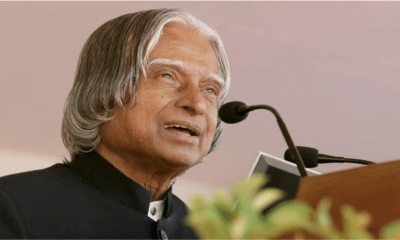Technology
DRDO develops single crystal blades technology
The Defence Research and Development Organization (DRDO) has developed single crystal blades technology and supplied 60 of these blades to Hindustan Aeronautics Limited (HAL) as part of their indigenous helicopter development program for helicopter application.
It is part of a program taken up by Defence Metallurgical Research Laboratory (DMRL), a premium laboratory (HPT) blades using a nickel-based super alloy. The supply of remaining four sets will be completed in due course.
Helicopters used in strategic and defence applications need compact and powerful aero-engines for their reliable operation at extreme conditions. To achieve this, state-of-the-art Single Crystal Blades having complex shape and geometry, manufactured out of Nickle based superalloys capable of withstanding high temperatures of operation are used. Very few countries in the world such as USA, UK, France and Russia have the capability to design and manufacture such Single Crystal (SX) components.
The DMRL undertook this task based on its expertise gained during the development of such a technology for an aero-engine project earlier. Complete vaccuum investment casting process to realize the blades, including die design, wax pattering, ceramic moulding, actual casting of components non-destructive evaluation, heat treatment and dimensional measurement has been established at DMRL.
Moreover, special ceramic composition had to be formulated for making strong ceramic moulds which can withstand metallostatic pressure of liquid CMSX-4 alloy at 1500 degrees Celsius and above during casting operation.
Also Read: Second COVID-19 wave may bring down economic growth below double digit
The challenge of maintaining the required temperature gradient has also been overcome by optimising the casting parameters. A multi-step vacuum solutionising heat treatment schedule for complex CMSX-4 superalloy to achieve the required microstructure and mechanical properties has also been established. Further, a stringent non-destructive evaluation (NDE) methodology for the blades along with the technique for determining their crystallographic orientations has been developed.










































